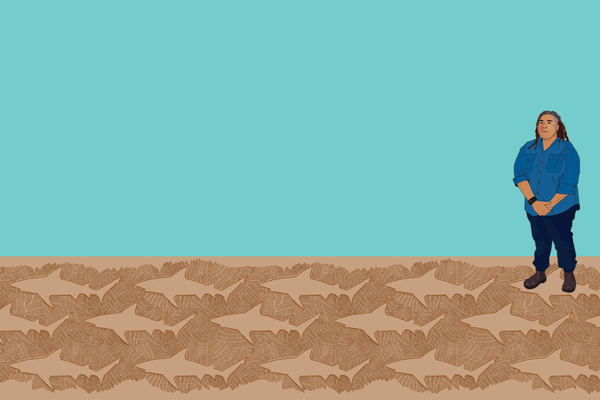The Biggest Fish - New South Wales New State Emblem
The reason we’re now madly scratching our heads trying to think up an impressive nickname for an impressive ancient beast as part of a statewide competition– is due to the quick thinking of a local NSW man more than half a century ago and the speedy response of a palaeontologist.
The story starts in the 1950s when Canowindra bee-keeper William Simpson contacted the Australian Museum to tell them about a very interesting rock. Workmen grading the roads had uncovered a large slab covered in strange impressions and Mr Simpson was almost certain they were fossils.
Palaeontologist Harold Fletcher raced to the scene and what he found there amazed him. More than 100 armoured fish – revealed in a large rock slab almost 2 metres high and a metre wide. From 1968 this piece of ancient artistry become a prize exhibit in the Museum’s fossil gallery.
With Fletcher then lacking the resources to do anything further – the story might have ended there. But in1992 his successor, Museum palaeontologist Alex Ritchie, gave a talk at the Canowindra Rotary Club which ignited a torrent of people power.
In 1993 under Ritchie’s supervision and with the help of a 22-tonne excavator - local business people, farmers, truck drivers, teachers, students and residents – uncovered around 70 tonnes of fossil slabs. Stored undercover in the Showground, Canowindra school pupils and other volunteers hosed and scrubbed the slabs clean, to finally reveal the most incredible fossil haul.

© Australian Museum
A massed collection of thousands of Devonian fish. Bizarre ancient creatures – some armoured, some with lungs, some with jaws like crocodiles that had been trapped in a drying pool about 360 million years earlier - long before dinosaurs roamed the earth.
Incredibly many of them were complete, fully articulated and arranged as if they had died the day before. Amongst the treasure trove were four new species. Huge and resembling a modern pike – was Mandageria, with one specimen spanning an impressive 1.6 metres. With a big flattened head, a jaw lined with pointed teeth and built for speed - Mandageria is thought to have been the top predator in the Canowindra pool (described by Ahlberg and Johanson in 1997).
And so the story continues today. The best fossil specimens can be seen on public display at the Age of Fishes Museum in Canowindra and the State of NSW can proudly flaunt its emblem of the biggest fish in the pool, courtesy of the Australian Museum.







